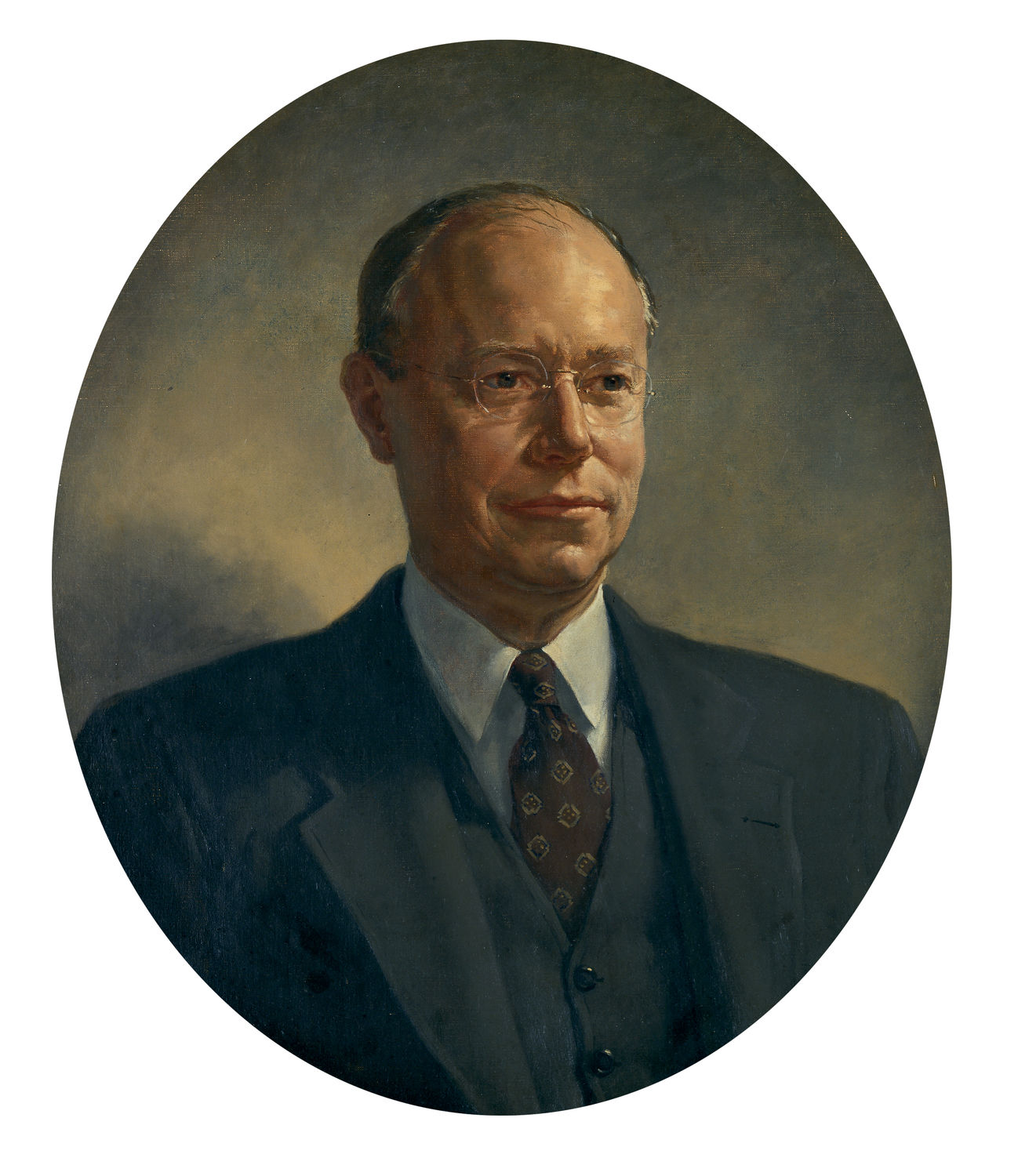
| Title | Robert A. Taft |
| Artist/Maker | Deane Keller |
| Date | 1958 |
| Medium | Oil on canvas |
| Dimensions | Sight: h. 22.625 x w. 19.5 in. (h. 57.4675 x w. 49.53 cm)
Canvas: h. 22.75 x w. 19.75 in. (h. 57.785 x w. 50.165 cm) |
| Credit Line | U.S. Senate Collection |
| Accession Number | 32.00008.000 |
Yale University Art Professor Deane Keller was recommended by Robert Taft’s brother Charles to paint the senator’s portrait for one of the oval wall panels in the Senate Reception Room of the Capitol. Keller, of Hamden, Connecticut, was considered the “unofficial artist” of Yale, Robert Taft’s alma mater. Altogether, Keller executed more than 75 portraits of Yale faculty members. Apart from studying three years in Rome and serving in World War II, Keller spent his entire adult life at the university. In a career that included more than 800 commissions, he was said to have “captured the images of some of the 20th century’s most prominent politicians and academicians.”
Taft and Wisconsin Senator Robert M. La Follette, Sr., were selected by the Special Committee on the Senate Reception Room to be among the five outstanding senators whose portraits would embellish the long-vacant oval medallions in the room. The two 20th-century senators, so honored after much debate during the selection process, joined the easily agreed-upon threesome of Henry Clay, Daniel Webster, and John C. Calhoun.
The Taft image was painted on canvas at the artist’s studio in Connecticut and finished in the Capitol after the canvas was positioned on the room’s east wall. In addition to completing a second portrait of Robert Taft, now at the Taft School in Watertown, Connecticut, Keller executed paintings of Presidents Herbert Hoover and William Howard Taft.
Born in Cincinnati, Ohio, Robert Alphonso Taft, the son of President William Howard Taft, would one day become the leading spokesman for conservative opinion in the United States. Elected to the U.S. Senate in 1938, Taft opposed President Franklin D. Roosevelt's New Deal programs and efforts to expand the federal government at the expense of state and local jurisdictions. In Congress, Taft chaired the Senate Labor and Public Welfare Committee, where he helped write the Labor-Management Relations Act of 1947. Known as the Taft-Hartley Act, it placed controls on labor unions and prohibited "closed shops." As a member of the Foreign Relations Committee, Taft spoke out on international issues, especially criticizing President Harry S. Truman's Korean and Chinese policies. Identified as "Mr. Republican," Taft enjoyed wide respect for his fairness, courage, and integrity, despite his often controversial positions.
Taft was an unsuccessful candidate for the Republican presidential nomination in 1940, 1948, and 1952. During his brief service as Senate majority leader in 1953, he became a prominent advisor to President Dwight D. Eisenhower. Illness forced Taft to relinquish active Senate leadership in June of 1953, and he died the following month.